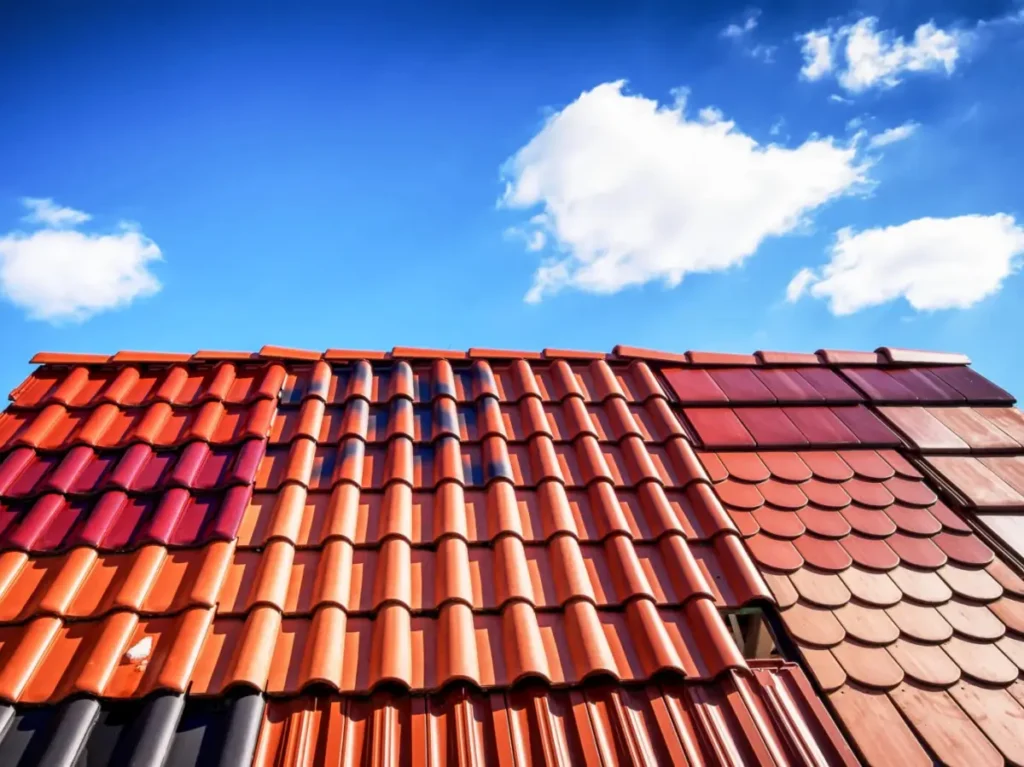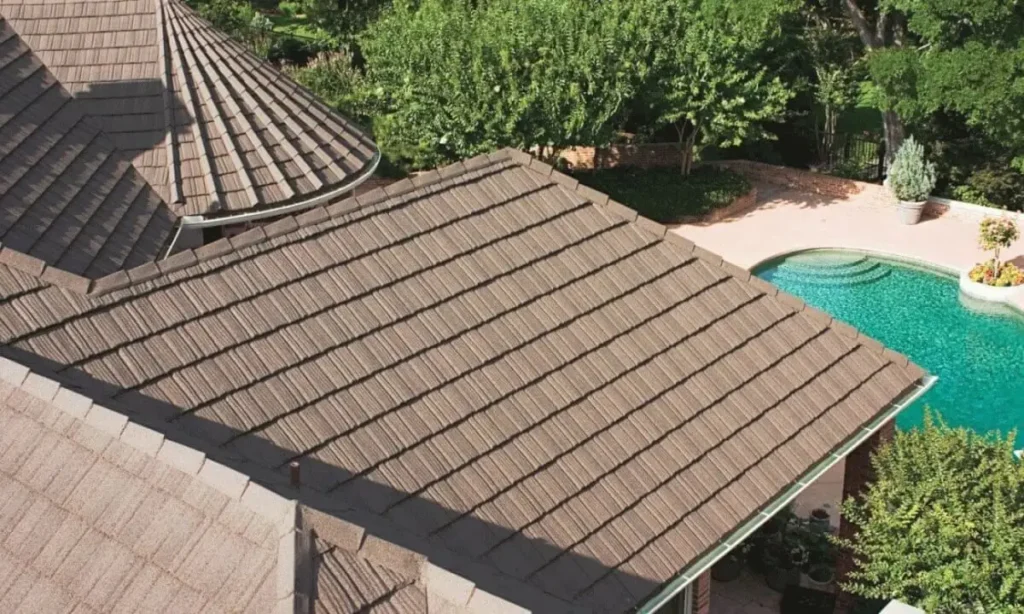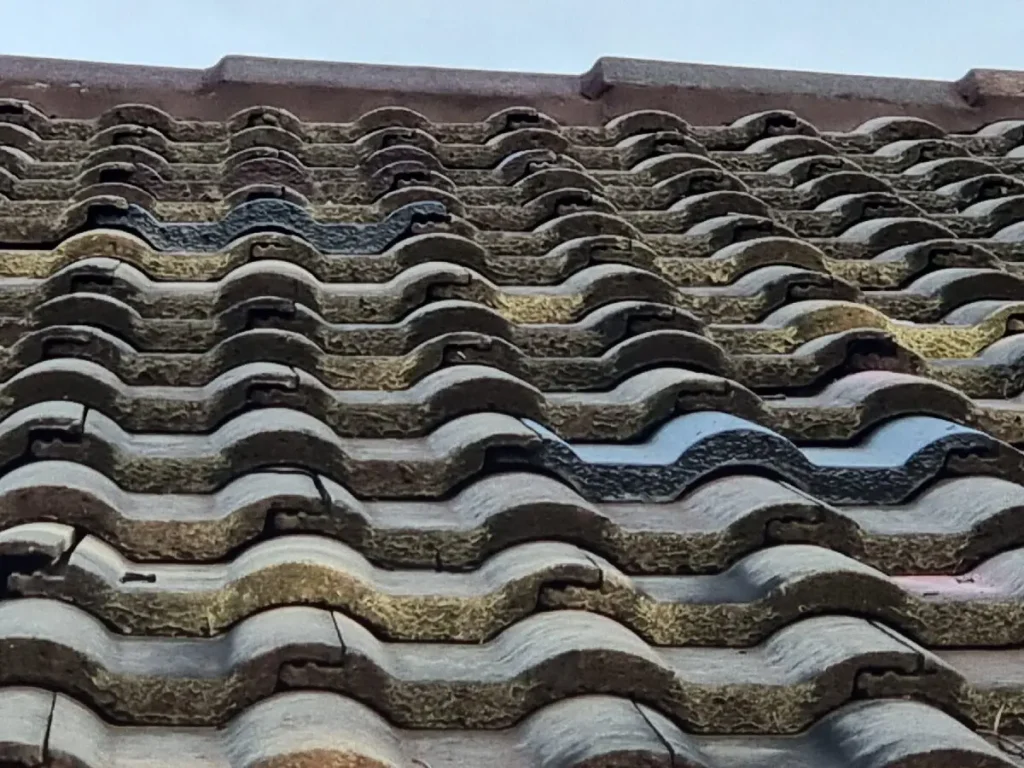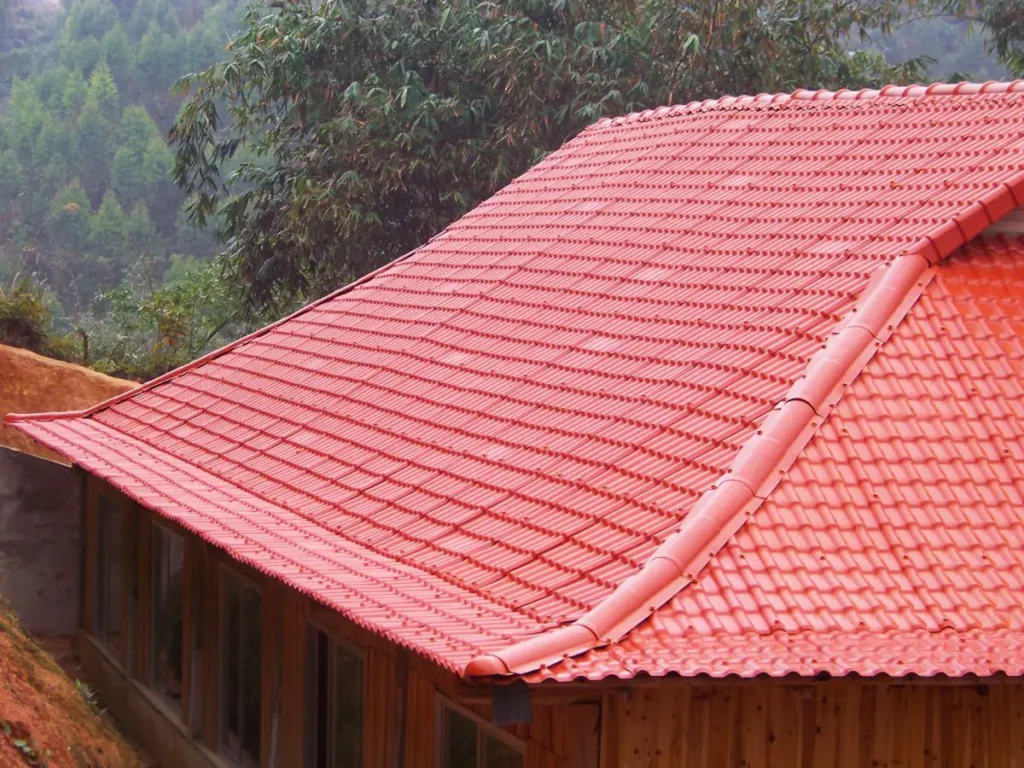—Which one is fit to your house?
Choosing the right roof tile material is a crucial decision that can significantly impact the aesthetics, durability, and overall value of a building. With a wide range of options available, each with its own distinct advantages and considerations, it’s important to delve into the intricacies of various roof tile materials. From the timeless elegance of clay tiles to the rugged durability of metal tiles, and from the natural charm of wood shingles to the versatile appeal of fiber cement tiles.
let’s explore the characteristics, benefits, and drawbacks of these different roofing materials. By understanding their unique properties, you can make an informed choice that not only enhances the visual appeal of your roof but also withstands the test of time and nature’s elements. Join us as we embark on a comprehensive journey through the diverse world of roof tile materials.
Clay Tiles

Advantages:
- Clay tiles have a beautiful and elegant appearance that can enhance the charm and value of a building.
- They are highly durable and can withstand prolonged exposure to UV rays, wind, rain, and fire.
- Clay tiles provide good insulation and thermal properties, helping to maintain a comfortable indoor temperature.
- Clay tiles are environmentally friendly as they are made from natural materials and can be recycled.
Disadvantages:
- Clay tiles are relatively heavy and require a roof structure capable of supporting their weight.
- Installation and maintenance of clay tiles can be complex and require professional skills and experience.
- Clay tiles are more expensive, making them less suitable for projects with a limited budget.
Stone Coated Metal Roof Tiles

Advantages:
- Metal tiles are lightweight and easy to install, suitable for various roof structures.
- They possess excellent durability and corrosion resistance.
- Metal tiles have exceptional wind resistance, capable of withstanding strong winds and hurricanes.
- Metal tiles are environmentally friendly as most metal materials can be recycled.
Disadvantages:
- Metal tiles are relatively expensive, especially for some high-end metal materials.
- For color painted Metal tiles may produce noise during rainfall.
- Metal tiles have high thermal conductivity, which can result in increased indoor temperatures.
Color Painted Metal Roof Tile

Advantages:
- Durability: Color painted metal roof tiles are highly durable and can withstand harsh weather conditions, including heavy rain, snow, and strong winds.
- Longevity: Metal roof tiles have a longer lifespan compared to many other roofing materials, typically lasting 40 to 70 years or more.
- Lightweight: Metal roof tiles are lightweight, making them easier to install and reducing the load on the roof structure.
- Fire resistance: Metal roof tiles are non-combustible and provide excellent fire resistance, making them a safe choice for areas prone to wildfires.
- Energy efficiency: Metal roof tiles can reflect sunlight, reducing heat absorption and helping to keep the building cooler, which can contribute to energy savings.
- Low maintenance: Metal roof tiles require minimal maintenance and are resistant to issues such as rot, decay, and insect damage.
- Versatility: They are available in a wide range of colors and styles, allowing homeowners to choose a design that suits their preferences and complements the overall aesthetics of the building.
Disadvantages:
- Initial cost: The upfront cost of color painted metal roof tiles is generally higher compared to some other roofing materials.
- Noise: During heavy rain or hail, metal roof tiles can generate more noise compared to materials like asphalt shingles. However, proper insulation and underlayment can help reduce the noise.
- Expansion and contraction: Metal roof tiles can expand and contract with temperature changes, which may require proper installation techniques to prevent leaks.
- Denting: While metal roof tiles are durable, they can still be susceptible to denting from heavy impact, such as falling branches or hailstones.
- Potential for corrosion: If the metal roof tiles are not properly coated or maintained, they can be prone to corrosion over time.
Asphalt Shingles

Advantages:
- Asphalt shingles are an affordable and widely used roof tile material.
- They are easy to install and suitable for various roof structures.
- Asphalt shingles offer good durability and waterproofing.
- They come in a variety of colors and styles.
Disadvantages:
- Asphalt shingles have a relatively short lifespan, typically ranging from 20 to 30 years.
- They may crack and become brittle under extreme temperatures and prolonged exposure to sunlight.
- Asphalt shingles have a significant environmental impact due to their non-recyclable nature.
Slate Roof Tiles

Advantages:
- Slate tiles are extremely durable and can last for several decades or even longer.
- They are strong, waterproof, and fire-resistant, effectively protecting against natural disasters and fires.
- Slate tiles offer a variety of colors and textures, providing greater design flexibility in terms of appearance.
Disadvantages:
- Slate tiles are heavy and require a roof structure capable of supporting their weight.
- Installation and maintenance of slate tiles can be complex and require professional skills and experience.
- Slate tiles are relatively expensive, especially high-end varieties.
There’s also metal roof tiles designed like slate roof tile shape.
Concrete Tiles

Advantages:
- Concrete tiles are an affordable roof tile material.
- They offer good durability and fire resistance.
- Concrete tiles can simulate other types of tiles, providing a diverse range of appearance options.
Disadvantages:
- Concrete tiles are relatively heavy and require a roof structure capable of supporting their weight.
- Prolonged exposure to harsh weather conditions can cause cracking and fading of concrete tiles.
- Repairing concrete tiles can be complex and requires professional skills and experience.
Wood Shingles

Advantages:
- Wood shingles have a natural and aesthetically pleasing appearance, adding warmth and a natural ambiance to a building.
- They are relatively lightweight and easy to install.
- Wood shingles provide good insulation, helping regulate indoor temperatures.
Disadvantages:
- Wood shingles require regular maintenance and care to prevent rotting and biological growth.
- They may not be suitable for use in areas with a high risk of fires.
- Wood shingles are relatively expensive and susceptible to weather changes and UV exposure.
There’s also metal roof tiles designed like wood shingles roofing shape.
Fiber Cement Tiles

Advantages:
- Fiber cement tiles offer excellent durability and fire resistance.
- They are relatively lightweight and easy to install.
- Fiber cement tiles can simulate the appearance of other materials, providing diverse options.
Disadvantages:
- Fiber cement tiles are relatively expensive.
- They may require regular maintenance and painting to maintain their appearance and performance.
- Fiber cement tiles may crack under extreme temperature changes.
PVC Roof Tiles

Advantages:
- PVC roof tiles are lightweight, making them easy to handle and install.
- They offer excellent durability and resistance to impact, fire, and chemicals.
- PVC roof tiles have good thermal insulation properties, helping to regulate indoor temperatures.
- They are low-maintenance and resistant to rot,mold, and mildew.
- PVC roof tiles are available in a variety of colors and styles.
- They are environmentally friendly as they can be recycled.
Disadvantages:
- PVC roof tiles are relatively expensive compared to some other roofing materials.
- They may expand and contract with temperature changes, requiring proper installation techniques to prevent leaks.
- PVC roof tiles have a shorter lifespan compared to materials like clay or slate.
- Exposure to extreme heat or fire can cause PVC roof tiles to melt or deform.
Conclusion
As you can see, each roof tile material has its own set of advantages and disadvantages. When choosing the appropriate roof tile material for your home, it is recommended to consider local climate conditions, budget constraints, design requirements, and maintenance and repair needs. Clay tiles offer elegance and durability, while slate tiles provide longevity and design flexibility. Metal tiles are lightweight and durable, and concrete tiles offer affordability and versatility. Asphalt shingles are cost-effective, wood shingles provide natural charm, fiber cement tiles offer durability and fire resistance, and PVC roof tiles are lightweight and low-maintenance. By carefully considering these factors, you can make an informed decision that suits your specific needs and ensures a beautiful and functional roof that withstands the test of time and nature’s elements.




